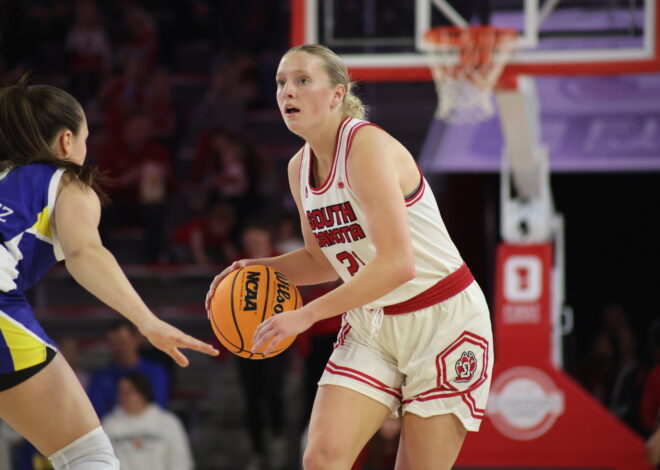It’s time to organize, bring on the college athletic union
Hail to the union, the collegiate athlete union.
I might be jumping the gun on this one — there are no college athletes picketing arenas with “More work? Less pay? No way!” signs, but a recent decision by the regional National Labor Relations Board could mean monumental changes to college athletics.
The official ruling March 26 concluded that Northwestern University football players on scholarship should be treated like employees with the right to form a union.
The impact: the potential for athletes to use avenues like collective bargaining to negotiate contracts and challenge the NCAA’s classification of amateur.
The NLRB’s decision is not necessarily knocking on the University of South Dakota’s door. The ability to unionize in this decision applied solely to football players at Northwestern with eligibility and on scholarship, and is only affecting labor laws for private institutions.
At USD, athletes would only have the ability to unionize under state labor laws — which are awful since we are in a “right to work” state.
But it’s the potential that matters. The potential for athletes to have a stronger, united voice so they can have a fair share of the economic growth they help create at universities.
I’ve grown up with a family heavily involved with unions back in Iowa. My grandfather was a proud member of his plumbers union, and my uncle is a union leader for his United States Postal Service office.
My mom — who is no doubt one of the biggest role models in my life — works as a director for the Iowa State Education Association. Support for labor unions runs in my veins.
I’ll admit I come to this discussion with a palpable bias, but I’ve also read up on a number of Doomsday articles which highlight the very worst that can come from this pro-union decision.
They are as follows:
1. It would spoil the players. They’d be ordering first-class plane tickets and their own rooms when they travel.
2. Unionization would pit collegiate sports against one another.
3. It could cost the university a load of money.
4. And my personal favorite, unions are corrupt and run by the mob.
Here’s what these naysayers don’t mention though — the athletes and what they sacrifice.
Why shouldn’t a football player who suffered two concussions be able to bargain for better health care? Why can’t the soccer players with high GPAs and full class loads negotiate larger scholarship funds?
We are not talking about “pay-for-play” here. Just like how the unions paved the way for middle class Americans to have pensions and paid health care, an athletic union is about having a support system for these students when their university’s program turns it back on them.
Former Ohio State University running back Maurice Clarett comes to mind as an athlete who could have benefitted from a college athletic union. He helped lead the Buckeyes to a national championship his first year, rushing for 1,237 yards and 18 touchdowns.
Knowing the pressure he was putting his body under in his position, Clarett made a few public comments about supporting a “one and done” drafting eligibility in the NCAA, instead of the standard three. When Ohio State’s administration turned its back on Clarett, the fall was epic. He ended up in jail for armed robbery and is since attempting to put his life back together.
Just think what a union could have done for Clarett. He could have received representation to defend himself from his ejection from the team and the kind of support required to overcome Ohio State’s bullying tactics to get him out of the picture.
We won’t know much about what’s next for the idea of unionization until the NLRB in Washington, DC reviews the decision, but here’s hoping they support the athlete and their talent, not those that treat these students as commodities.
Let’s all take a note from the prolific folk singer Pete Seeger and stand behind these Northwestern athletes and the NLRB, because “Solidarity forever…for the union makes us strong.”

